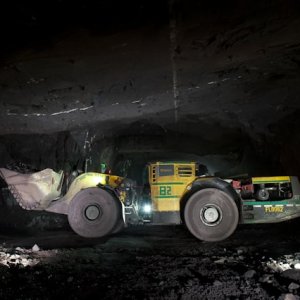Leader in Low-Cost Production Ramps Up Activities

STORY INLINE POST
The next presidential administration will have a great deal of influence over the mining industry’s future, says John McCluskey, President and CEO of Alamos Gold, who also points out that the approach of the authorities toward the industry can harm the attractiveness of Mexico’s mining industry as well as efficiency and productivity in the sector. “Flatlining gold reserves and production plus higher inflation could make a strong case for the gold market,” he says. “But the next administration and its policies will play a large role in the health of the industry.”
McCluskey underlines that supply and demand fundamentals favor a loftier gold price. “Inflation growth provides a strong base for the gold market,” he points out. “Stronger gold prices will be evident in 2019 and beyond.” While the price of gold fluctuates by around US$100/oz, McCluskey says sustained, long-term growth will be spurred by inflation but also by US debt. “We see the increased growth in US debt is getting to the point that the risk of that debt starts to weigh heavily on investors’ minds and they will support gold.”
Canada-based intermediate gold-producer Alamos Gold operates the Mulatos and El Chanate mines in Mexico. According to McCluskey, Alamos Gold’s business is doing well thanks to production ramp-ups in all its assets except El Chanate, which is more or less coming to the end of its life cycle. “The Young-Davidson mine has seen a significant expansion in its underground mining rates, from around 5,000t/d in 2015 to 7,000t/d today,” he says. Alamos Gold’s earnings from operations have also been bolstered by higher-grade ore coming from Young-Davidson’s underground mine. “As more of this ore goes through the mill, costs go down and production goes up, which delivers higher sales and greater margins,” McCluskey says.
It is easy to look at Alamos as the poster story of efficiency, but McCluskey argues there should be little concern about companies falling into inefficiencies even when metal prices rise again. “This allows for marginal deposits to be brought into production to harness high prices,” he says. However, when prices again drop, these deposits sometimes lose money and look inefficient. “This does not mean they are inefficient as their operational costs are always high,” says McCluskey. But he adds that a common issue that takes place when metal prices are high is executives paying too much for marginal deposits. Alamos Gold prefers to go shopping for new projects when the market bottoms out. “We have taken advantage of cycles and successfully became a 500,000oz/y producer in only 15 years,” he says.
























